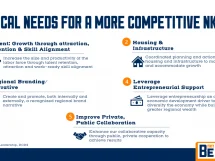
The number of paid employees at jobs in and around Bowling Green declined by more than 3,300 from 2008 to 2010, reports the Bowling Green Daily News.
But the actual number of establishments with employees has declined very little, according to Business Patterns data recently released by the U.S. Department of Commerce. That number was 2,861 in 2008 and dropped to 2,768 in 2009, but it was back up to 2,830 in 2010, a decline of 1.1 percent.
Manufacturing saw the largest decline in paid employees.
+++
A willingness to accept things that seem too good to be true — mixed with desperation for disposable income in a down economy — often leads many Lexington residents to be unwitting accomplices in “reshipping” schemes, Lexington police detective Gene Haynes told the Herald Leader.
A reshipper, also known as a “mule,” is essentially an intermediary who receives items bought online and mails them to their final destination. The problem is, most of the items were bought using stolen or fraudulent credit cards by organized criminals who live overseas.
+++
The homebuilding business in Louisville is creeping back, but it is a long way from the pre-boom days, the Louisville Courier-Journal reports.
Last year, Louisville-area home building plunged to its lowest level in at least 23 years.
Builders in a seven-county Louisville-Southern Indiana area last year took out 1,433 permits for single-family construction — 78 percent fewer than in the market’s peak in 2004, according to analysis of U.S. Census data by University of Louisville economist Paul Coomes, the paper says.
+++
Pike County is working on establishing the first public bi-fuel station in Kentucky.
The county is the leading coal and natural gas producer — 53 percent of the total — in Kentucky. In order to capitalize on the natural resources readily available in its natural gas fields, officials there hope to make Kentucky history by opening the first station for vehicles capable of running on two fuels.
On the average, consumers would pay 50 percent less per BTU in comparison to regular gasoline or diesel fuel per gallon.




















Add Comment